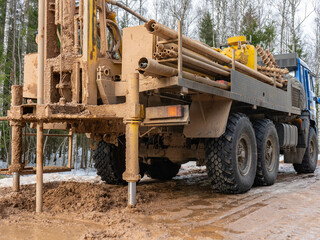
Hydrogeological surveys are performed to assess the distribution, movement, and pleasantness of groundwater within a specific area. those surveys are important for understanding groundwater assets, figuring out the ability of aquifers, and informing groundwater management and development strategies. here’s an overview of the way hydrogeological surveys are normally conducted:
Desk study and background studies:
- The survey normally starts offevolved with a comprehensive evaluation of current geological, hydrological, and environmental data for the examined area.
- This consists of geological maps, topographic maps, soil surveys, well logs, groundwater level data, and hydrological reports.
- Historic information on land use, hydrological conditions, and groundwater abstraction sports is also accrued to apprehend the hydrogeological putting and ability anthropogenic impacts.
Field Reconnaissance:
- Area reconnaissance involves touring the observed location to gain a firsthand understanding of its geological, hydrological, and environmental characteristics.
- This consists of identifying surface water functions, geological formations, soil kinds, plant life cover, and land use styles.
- Observations and measurements are made to evaluate surface water flow paths, drainage patterns, and potential recharge regions for groundwater.
Geophysical Surveys:
- Geophysical techniques are typically used to non-invasively check out subsurface geological systems and groundwater situations.
- Strategies including electric resistivity imaging (ERI), ground-penetrating radar (GPR), seismic surveys, and electromagnetic surveys are employed to delineate ability aquifers, map groundwater flow paths, and characterize subsurface lithology.
- Geophysical surveys provide valuable information at the intensity, thickness, and hydraulic properties of aquifers, in addition to the presence of geological structures which include faults and fractures that could influence groundwater flow.
Drilling and proper installation:
- Based totally on the findings of the desk study, field reconnaissance, and geophysical surveys, drilling locations are selected to penetrate the subsurface and get entry to groundwater-bearing formations.
- Drilling techniques vary depending on the geological conditions and depth of the goal aquifer. common drilling techniques consist of rotary drilling, cable tool drilling, and percussion drilling.
- After drilling, monitoring wells or piezometers are established to measure groundwater tiers, gather water samples, and reveal groundwater pleasant over the years.
Hydrogeological testing:
- Pumping checks, slug tests, and tracer tests are carried out to assess the hydraulic properties of aquifers, which include transmissivity, hydraulic conductivity, storativity, and unique yield.
- Pumping tests contain pumping water from a well at a steady charge even as tracking modifications in water level within the pumped properly and surrounding statement wells. This gives statistics on aquifer reaction, recharge charges, and properly yield.
- Slug assessments and tracer tests are used to estimate aquifer parameters inclusive of hydraulic conductivity and porosity by way of inducing managed adjustments in groundwater stages or injecting tracer substances into the subsurface.
Information Analysis and Interpretation:
- The information amassed from area surveys, drilling operations, and hydrogeological testing is analyzed to represent the hydrogeological properties of the look-at location.
- Geostatistical strategies, numerical modeling, and GIS-primarily based analysis are regularly used to integrate and interpret hydrogeological statistics, delineate groundwater flow patterns, and determine groundwater vulnerability and sustainability.
Report preparation and suggestions:
- A comprehensive hydrogeological document is ready to summarize the findings of the survey, inclusive of geological descriptions, hydrological information, groundwater great analyses, and guidelines for groundwater management and development.
- The record can also encompass maps, cross-sections, and conceptual models illustrating the hydrogeological characteristics of the observed area and the ability of groundwater resources.